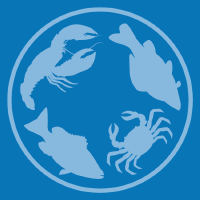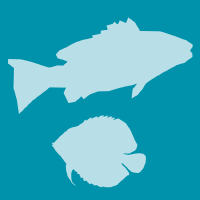Topic Editors


Future Foods from the Sea
Topic Information
Dear Colleagues,
It is a big challenge for our world to feed ten billion people healthily in the near future without increasing the environmental impact of this process. Land-based and/or emission-intensive expansion of food production is prohibited to avoid the compromise of ecosystem services. We are expecting the ocean to fill the food gap sustainably in the future. Increases in the main seafood sectors—finfish capture and mariculture—are likely, but we should also look elsewhere on the incorporation of marine invertebrates, fish processing byproducts, seaweeds, and microalgae in routine diet to feed people high-quality protein and fat, as well as vitamins and minerals. This Topic will host diverse contributions ranging from research papers to up-to-date reviews dealing with edible sea products from farm to fork as part of dietary transition toward a sustainable and healthy future. It attempts to highlight the development of innovative food products or ingredients from the sea, as well as green and emerging technologies in seafood processing. It includes but is not limited to the following relevant themes:
- Meat and dairy analogues
- 3D food printing
- Food nanotechnology
- New food ingredients
- Designer foods
- Consumers’ behavior
- Fish byproducts
- Jellyfish
- Macroalgal and microalgal biomass
- Seafood allergens
- Seafood safety
Prof. Dr. Haohao Wu
Prof. Dr. Yanbo Wang
Prof. Dr. Na Sun
Topic Editors
Participating Journals
| Journal Name | Impact Factor | CiteScore | Launched Year | First Decision (median) | APC | |
|---|---|---|---|---|---|---|

Aquaculture Journal
|
- | - | 2021 | 15.0 days * | CHF 1000 | Submit |

Fishes
|
2.3 | 1.9 | 2016 | 15.7 Days | CHF 2600 | Submit |

Foods
|
5.2 | 5.8 | 2012 | 13.1 Days | CHF 2900 | Submit |

Nutrients
|
5.9 | 9.0 | 2009 | 14.5 Days | CHF 2900 | Submit |

Oceans
|
- | - | 2020 | 45.2 Days | CHF 1600 | Submit |
* Median value for all MDPI journals in the second half of 2023.

MDPI Topics is cooperating with Preprints.org and has built a direct connection between MDPI journals and Preprints.org. Authors are encouraged to enjoy the benefits by posting a preprint at Preprints.org prior to publication:
- Immediately share your ideas ahead of publication and establish your research priority;
- Protect your idea from being stolen with this time-stamped preprint article;
- Enhance the exposure and impact of your research;
- Receive feedback from your peers in advance;
- Have it indexed in Web of Science (Preprint Citation Index), Google Scholar, Crossref, SHARE, PrePubMed, Scilit and Europe PMC.


